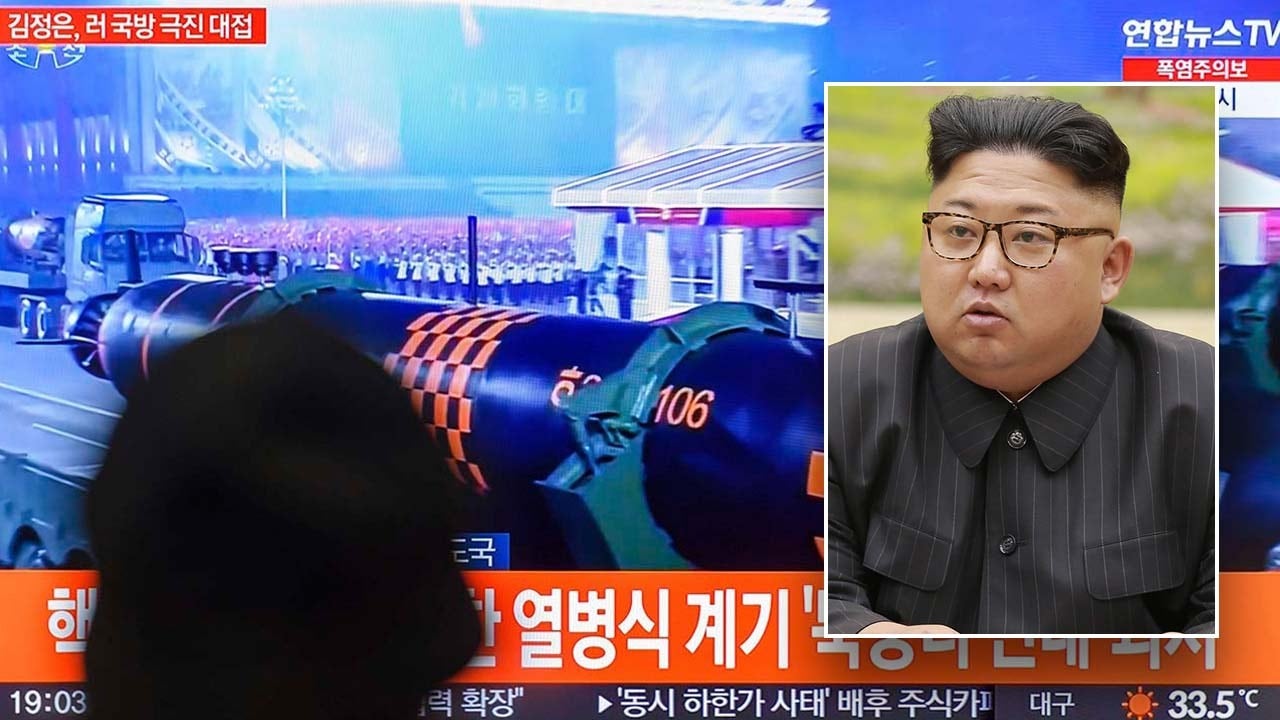
North Korea has continued its push to develop new ways to deliver nuclear weapons to targets, most recently with the development of underwater drones believed to be capable of carrying out nuclear attacks.
“The new nuclear underwater drone is consistent with North Korea’s nuclear doctrine, which Pyongyang seeks to operationalize in order to hold at-risk targets in South Korea, Japan and the United States,” Rebekah Koffler, a strategic military intelligence analyst who served as a senior official in the Defense Intelligence Agency (DIA), told Fox News Digital.
Koffler’s comments come as North Korea has unveiled multiple unmanned underwater vehicles in recent months, which the country has said are nuclear-capable and designed to carry out attacks on enemy naval vessels and ports. The country conducted its first test of such a weapon in March, with North Korean state media outlet Korean Central News Agency (KCNA) boasting at the time that the weapon was designed to launch a “radioactive tsunami,” according to an NBC News report.
The nuclear-capable drone was dubbed “Haeil,” which in Korean means tsunami, and is designed to be launched from the coast or towed by a ship and to “stealthily infiltrate into operational waters and make a super-scale radioactive tsunami through underwater explosion,” KCNA said.
NORTH KOREA’S KIM JONG UN ORDERS SHARP MISSILE PRODUCTION INCREASE, WANTS POWER TO ‘SURELY ANNIHILATE’ ENEMIES

A TV screen shows an image of North Korea’s first-ever nuclear-armed unmanned underwater vehicle at a military parade to mark the 70th anniversary of the signing of the armistice that halted the 1950-1953 Korean War. (Alamy Live News via AP)
The unmanned underwater craft traveled at a depth of 262 to 492 feet during the test, which reportedly lasted for 60 hours and ended with a test detonation of a warhead at a target designed to resemble an enemy port, state media said, adding that the test was a way of alerting the U.S. and its allies of a “nuclear crisis” in the region and that North Korean leader Kim Jong Un was “greatly satisfied” with its results.
The test of Haeil was followed up by yet another test a few weeks later, this time with a second unmanned underwater craft named “Haeil-2,” according to a report from the Japan Times. This time, KNCA reported that the second underwater drone traveled 620 miles for 71 hours and 6 minutes before successfully detonating near a simulated enemy target.
“The test perfectly proved the reliability of the underwater strategic weapon system and its fatal attack ability,” KCNA said.
Photographs released along with the KCNA report showed a large torpedo-shaped object apparently moving through the water, which was followed by an underwater blast visible on the surface.
The unveiling of the underwater vessels came at the same time as increased tensions between North Korea and the West with a series of nuclear missile tests in March that included a simulated attack on South Korea and the launching of a cruise missile toward the sea three days later, according to NBC News.
NORTH KOREA DETAINS US SOLDIER WHO CROSSED BORDER ‘WITHOUT AUTHORIZATION,’ OFFICIALS SAY
The country has continued to display its reported nuclear advancements into the summer, most recently showing off multiple unmanned underwater vessels during a military parade in Pyongyang to commemorate the 70th anniversary of the armistice that halted the Korean War. The parade also featured North Korea’s Hwasong-17 and Hwasong-18 intercontinental ballistic missiles, according to a report from Reuters, which are believed to have a range that can strike anywhere within the United States.

A TV screen shows an image of a Hwasong-18 ICBM at a military parade to mark the 70th anniversary of the signing of the armistice that halted the Korean War. (Alamy Live News via AP)
Taken together, Koffler said her assessment suggests that “that North Korea can be considered a de facto nuclear state.”
“It probably has sufficient material for more than 100 weapons and has already conducted ballistic missile tests that have demonstrated the capability to strike targets in the United States, Japan and South Korea,” Koffler said.
Koffler said North Korea’s current nuclear strategy “prioritizes deterrence rather than offensive strategy” and is unlikely to launch an “out-of-the-blue nuclear strike on the United States or its allies,” though she noted that the U.S. intelligence community is “gravely concerned” the country could pursue “a more aggressive military policy and take greater kinetic risk” within the next five to seven years.
“President Kim Jong Un believes that having this strategic capability will enable him to intimidate his country’s neighbors through coercion and non-nuclear but lethal strikes,” Koffler said. “This increased confidence in the effectiveness of its nuclear deterrence stems from Pyongyang’s belief that Washington and Seoul would refrain from an unacceptable, strong kinetic response to its aggression.”
NORTH KOREA FIRES 2 MISSILES AMID US NUCLEAR SUB IN SOUTH KOREA, SOLDIER CROSSING DMZ
North Korea has also seemingly sought to beef up its diplomatic efforts, seeking to forge closer ties with Russia and China to combat the West. According to Reuters, Russian Defense Minister Sergei Shoigu and a Chinese delegation joined Kim at the country’s recent military parade.

A TV screen shows an image of North Korean leader Kim Jong Un, center, with Russian Defense Minister Sergei Shoigu, left, and Chinese Communist Party member Li Hongzhong at a military parade. (Kim Jae-Hwan/SOPA Images/LightRocket via Getty Images)
Koffler also noted the similarities between North Korea’s new unmanned underwater vessels and Russia’s Poseidon torpedo, arguing that such similarities raise proliferation concerns.
“The Russian and North Korean regimes have been establishing closer ties, including in the military sphere, in the aftermath of Putin’s invasion of Ukraine and Washington’s formidable response to Moscow’s aggression,” Koffler said.
Koffler said she believes North Korea is likely to continue to escalate tensions in the region in the coming years, though it is unlikely the country would opt for using “traditional military force.”
CLICK HERE TO GET THE FOX NEWS APP
“While we can expect escalation in North Korea’s belligerence this decade, Pyongyang is more likely to use the strategy of coercion and covert action, rather than traditional military force, including nuclear weapons, to achieve its political and security objectives,” Koffler said. “It is an almost certainty that Pyongyang will continue to produce, test and field nuclear weapons and missiles and evolve its nuclear doctrine.”






